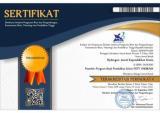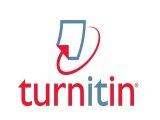Development of Electronic Student Worksheets Assisted with Wizer.me on Redox Reactions Learning
DOI:
https://doi.org/10.33394/hjkk.v12i1.10322Keywords:
electronic student worksheets redox reaction Wizer.meAbstract
Student worksheets serve as valuable teaching materials facilitating students' learning processes by expanding information on the targeted study topics. In the context of learning redox reactions, Depok 1stState Senior High School exclusively utilizes printed student worksheets. This research focuses on developing electronic student worksheets assisted by the Wizer.me platform for redox reaction material in class, aiming to enhance the efficacy of the learning materials. The research employs a Research and Development (R&D) method, utilizing the 4D development model modified to 3D. Instruments such as interview sheets, validation sheets, and questionnaires were employed, with a sample comprising 10 students from 10th grade. Data analysis was conducted descriptively. The results of the research indicate that 4D models were instrumental in developing electronic student worksheets due to their clearly directed steps or procedures. The developed product exhibits high validity, scoring an average of 84% for both the media and material aspects, with a content validity coefficient exceeding 0.8. Students responded positively to the student worksheet products, rating them high in design (82%), operational and visual communication (83%), resulting in an overall average score of 83%, classified as very practical. The developed product proves effective in supporting the learning of redox reactions.
References
Araafi, M. I., Zubaidah, S., Munzil, & Wicaksono, A. G. (2023). Effects of Remap-TPS Using Wizer.Me Website and Mindmap Application on Students’ Cognitive Learning Results. Jurnal Pendidikan: Teori, Penelitian, dan Pengembangan, 8(2), 92-99. https://doi.org/10.17977/jptpp.v8i2.22855
Argawati, N. O., & Suryani, L. (2020). Digital-based instruction: Chances and challenges in English language teaching context. International Journal of Evaluation and Research in Education, 9(4), 1138-1144. https://doi.org/10.11591/ijere.v9i4.20579
Cook, D. A., & Hatala, R. (2016). Validation of educational assessments: a primer for simulation and beyond. Advances in Stimulation, 1(31), 1-12. https://doi.org/10.1186/s41077-016-0033-y
Cristy, L. V., & Pamenang, F. D. (2023). Development of ethnoscience-based student worksheets of redox reactions, volta cells, and corrosion using liveworksheets. Jurnal Pendidikan Kimia, 15(3), 182-190. https://doi.org/10.24114/jpkim.v15i3.51211
Fathulain, M. Z., Effendi, & Gulo, F. (2018). Pengembangan lembar kerja peserta didik (LKPD) interaktif untuk pembelajaran kimia kelarutan dan hasil kali kelarutan di kelas XI SMA. Jurnal Penelitian Pendidikan Kimia, 5(1), 65-74. https://doi.org/10.36706/jppk.v5i1.8421
Ginting, F. A., Syahputra, R. A., Purba, J., Sutiani, A., & Dibyantini, R. E. (2022). Pengembangan modul berbasis discovery learning terintegrasi literasi sains pada materi laju reaksi. Jurnal Inovasi Pembelajaran Kimia, 4(2), 167-176. d https://doi.org/10.24114/jipk.v4i2.35671
Ihsan, N., Nasrudin, Sejati, A. E., & Sugiarto, A. (2023). Developing teaching material of research methodology and learning with 4D model in facilitating learning during the covid-19 pandemic to improve critical thinking skill. Jurnal Kependidikan, 9(2), 541-554. https://doi.org/10.33394/jk.v9i2.7110
Ismanto, B. D., Getut, P., & Suwarsi, T. U. (2019). The improvement of the understanding of the concepts and students activities using discovery learning with a recitation. The 2nd International Conference on Science, Mathematics, Environment, and Education (pp. 1-8). Surakarta: AIP Publishing. https://doi.org/10.1063/1.5139775
Kaliappen, N., Ismail, W. N., Ghani, A. B., & Sulisworo, D. (2021). Wizer.me and Socrative as innovative teaching method tools: Integrating TPACK and Social Learning Theory. International Journal of Evaluation and Research in Education, 10(3), 1028-1037. https://doi.org/10.11591/ijere.v10i3.21744
Komalasari, K. (2017). Pembelajaran Kontekstual. Konsep dan Aplikasi. (N. F. Atif, Ed.) Bandung: Refika Aditama.
Kopniak, N. B. (2018). The use of interactive multimedia worksheets at higher education institutions. Information Technologies and Learning Tools, 63(1), 116-129. https://doi.org/10.33407/itlt.v63i1.1887
Kumalasari, O. D., & Julianto. (2021). Pengembangan lembar kerja peserta didik ilmu pengetahuan alam berbantu website Wizer.me materi energi alternatif kelas IV sekolah dasar. Jurnal Penelitian Pendidikan Guru Sekolah Dasar, 9(7), 2827-2837.
Kurkovsky, S. (2013). Mobile game development: improving student engagement and motivation in introductory computing courses. Computer Science Education, 23(2), 138-157. https://doi.org/10.1080/08993408.2013.777236
Lili, W., Firdaus, M. L., & Sundaryono, A. (2021). Development of organic chemistry module with 4D model to improve students' creative thinking abilities. Bencoolen Journal of Science Education and Technology, 2(1), 16-19. https://doi.org/10.33369/bjset.2.1.16-19
Mithans, M., & Grmek, M. I. (2020). The use of textbooks in the teaching-learning process. Slovenia: University of Maribor Press. https://doi.org/10.18690/978-961-286-358-6.10
Muslim, F., Ekawarna, Ramalia, A., Wirayuda, R. P., & Chen, D. (2022). Learning intensity and visual learning style on learning outcomes. Journal of Educational Research and Evaluation, 6(2), 385-296. https://doi.org/10.23887/jere.v6i2.40312
Olena, O., & Anastasiia, O. (2022). Using of interactive worksheets (platform Wizer.me) as a form of implementation of flipped classroom ideas. International Scientific Journal(16), 375-378. https://doi.org/10.36074/grail-of-science.17.06.2022.063
Purba, R. A., Mawati, A. T., Ardiana, D. P., Pramusita, S. M., Bermuli, J. E., Purba, S. R., . . . Recard, M. (2021). Media dan Teknologi Pembelajaran. Jakarta: Yayasan Kita Menulis.
Rezeki, Y. T., & Kamaludin, A. (2023). Development of learning videos for simple chemistry practicum with acid-base based on green chemistry topic for students of class XI. Indonesian Journal of Science Education, 11(2), 437-453. https://doi.org/10.24815/jpsi.v10i4.29358
Ruel, E., Wagner, W. E., & Gillespie, B. J. (2016). Pretesting and Pilot Testing. London: Sage Publication, Inc. https://doi.org/10.4135/9781483391700
Suardi, M. (2018). Belajar dan Pembelajaran. Yogyakarta: Deepublish.
Sugiyono. (2014). Metode Penelitian Pendidikan Pendekatan Kuantitatif, Kualitatif, dan R&D. Bandung: Alfabeta.
Tegeh, I. M., & Kirna, I. M. (2013). Pengembangan Bahan Ajar Metode Penelitian Pendidikan dengan ADDIE Model. Jurnal IKA, 12-26. https://doi.org/10.23887/ika.v11i1.1145
Thiagarajan, S., Semmel, D. S., & Semmel, M. I. (1974). Instructional Development for Training Teachers of Exceptional Children: A Sourcebook. Minneapolis: Indiana University.
Tonapa, N., & Pamenang, F. D. (2022). The development of discovery learning based teaching module to support student concept mastery on redox. The 4th International Seminar on Chemical Education. 2645, pp. 1-5. Yogyakarta: AIP Publishing. https://doi.org/10.1063/5.0113760
Wardani, D. L., Degeng, I. N., & Cholid, A. (2019). Developing interactive multimedia model 4D for teaching natural science subject. International Journal of Education and Research, 7(1), 63-72.
Winarti, A., Almubarak, A., & Saadi, P. (2021). Visual learning style-based chemistry mental model representation through transformative online learning. National Seminar of Physics Education. 2104, pp. 1-9. Yogyakarta: IOP Publishing. https://doi.org/10.1088/1742-6596/2104/1/012023
Wizer.me. (2023). Retrieved from About us: https://app.wizer.me/
Downloads
Published
How to Cite
Issue
Section
Citation Check
License
License and Publishing Agreement
In submitting the manuscript to the journal, the authors certify that:
- They are authorized by their co-authors to enter into these arrangements.
- The work described has not been formally published before, except in the form of an abstract or as part of a published lecture, review, thesis, or overlay journal.
- That it is not under consideration for publication elsewhere,
- That its publication has been approved by all the author(s) and by the responsible authorities – tacitly or explicitly – of the institutes where the work has been carried out.
- They secure the right to reproduce any material that has already been published or copyrighted elsewhere.
- They agree to the following license and publishing agreement.
Copyright
Authors who publish with Hydrogen: Jurnal Kependidikan Kimia agree to the following terms:
- Authors retain copyright and grant the journal right of first publication with the work simultaneously licensed under a Creative Commons Attribution License (CC BY-SA 4.0) that allows others to share the work with an acknowledgment of the work's authorship and initial publication in this journal.Â
- Authors are able to enter into separate, additional contractual arrangements for the non-exclusive distribution of the journal's published version of the work (e.g., post it to an institutional repository or publish it in a book), with an acknowledgment of its initial publication in this journal.
- Authors are permitted and encouraged to post their work online (e.g., in institutional repositories or on their website) prior to and during the submission process, as it can lead to productive exchanges, as well as earlier and greater citation of published work.
Licensing for Data Publication
Hydrogen: Jurnal Kependidikan Kimia uses a variety of waivers and licenses, that are specifically designed for and appropriate for the treatment of data: Open Data Commons Attribution License, http://www.opendatacommons.org/licenses/by/1.0/ (default) Other data publishing licenses may be allowed as exceptions (subject to approval by the editor on a case-by-case basis) and should be justified with a written statement from the author, which will be published with the article.










